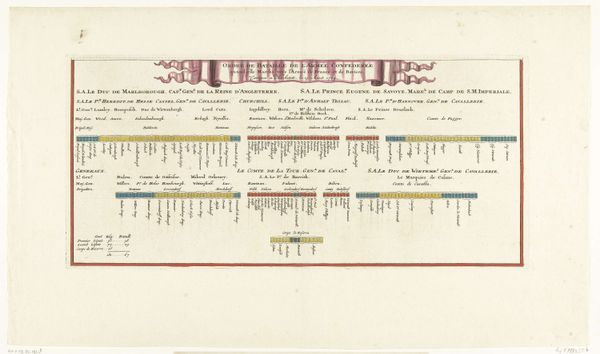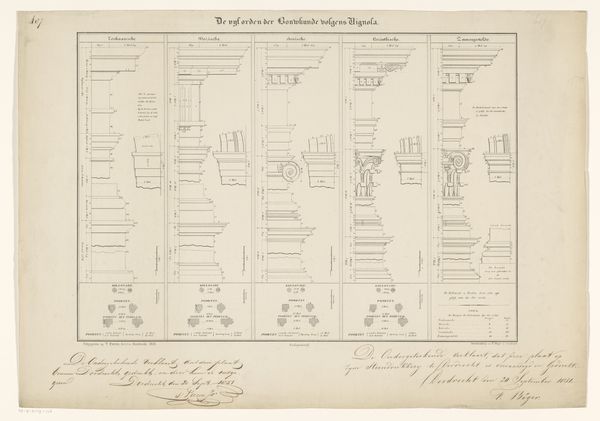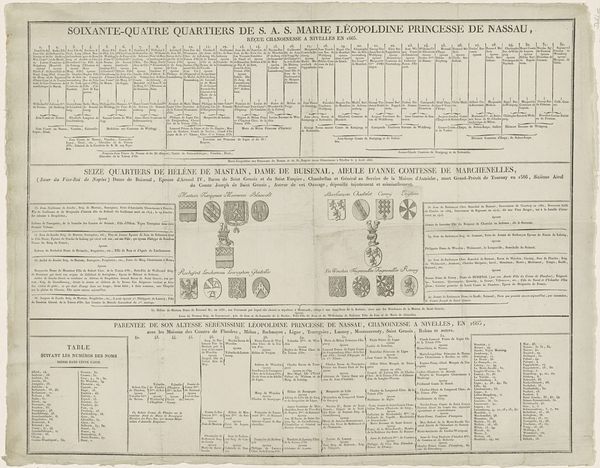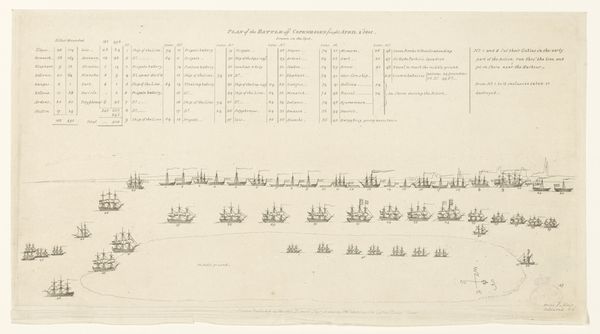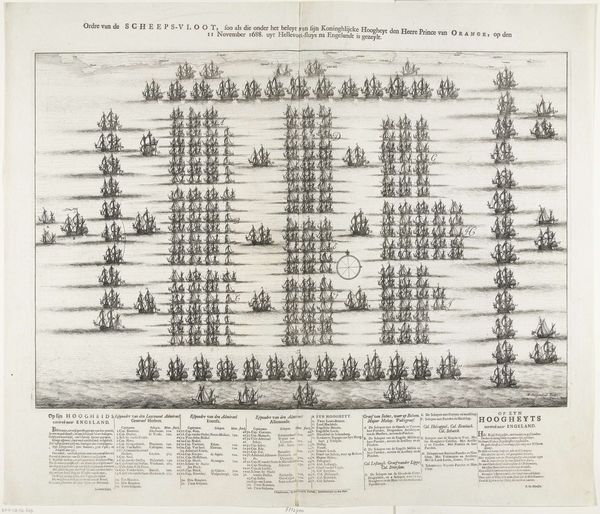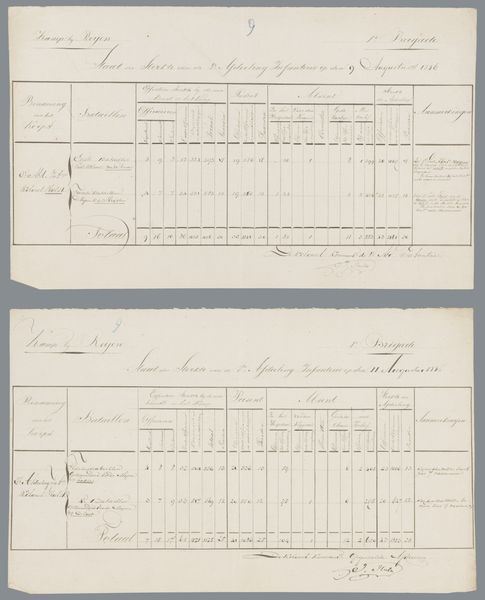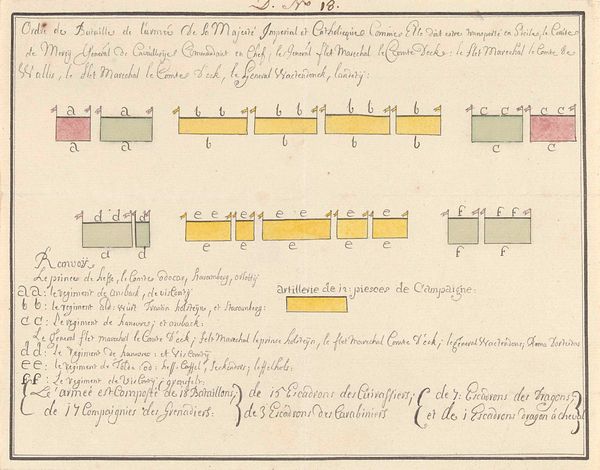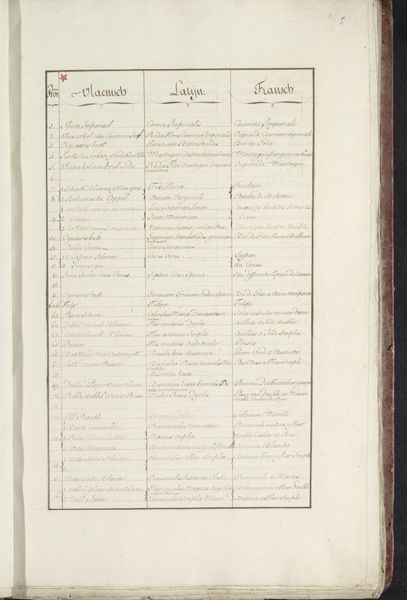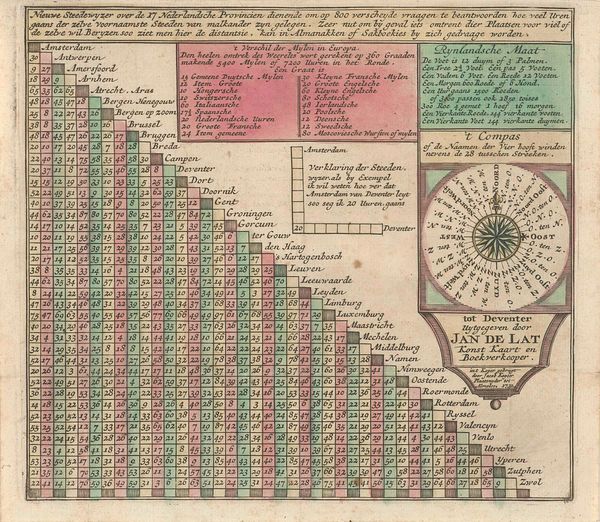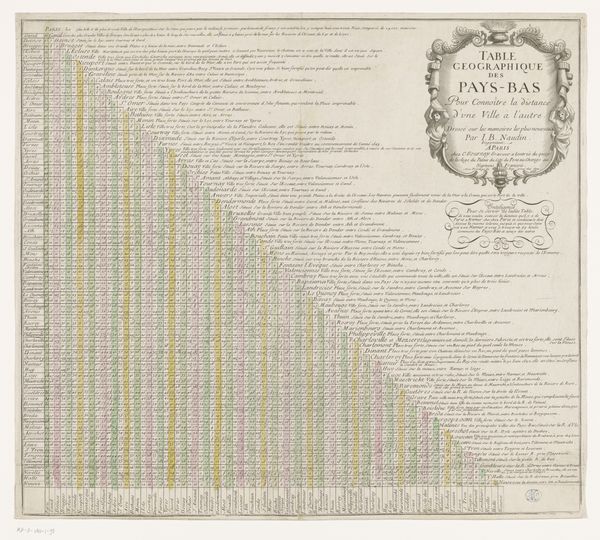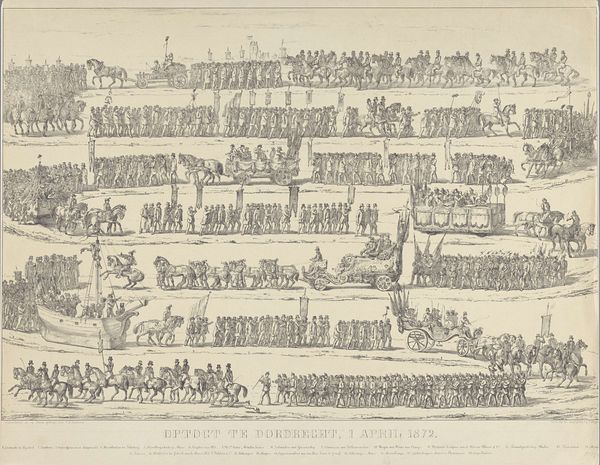
drawing, print, paper, ink
#
drawing
#
aged paper
#
hand written
#
hand-lettering
#
baroque
# print
#
hand drawn type
#
hand lettering
#
paper
#
personal sketchbook
#
ink
#
hand-written
#
hand-drawn typeface
#
fading type
#
pen work
#
history-painting
Dimensions: height 275 mm, width 435 mm
Copyright: Rijks Museum: Open Domain
Curator: So, here we have “Slagorde van de troepen onder bevel van de Prins van Savoye,” possibly from 1754, attributed to J. La Clé. It's a print and drawing in ink on paper, laid out almost like a table. What do you make of it? Editor: Well, it looks like a chart or diagram. The handwriting makes me think it's from a personal sketchbook of the time, but what could it possibly mean? How does this relate to contemporary ideas? Curator: This work offers a fascinating glimpse into 18th-century military strategy and representation. But let's look beyond the surface of battlefield tactics. How can we examine its gendered dynamics and implications within a patriarchal society? The use of visual language, order, and categorization could also reflect and reinforce existing social hierarchies. How might such rigid organization reinforce colonial power structures and the dehumanization inherent in warfare? Editor: I hadn’t considered that! I was focused on the literal depiction, not the possible social commentary. Is it then a form of subtle critique, using the very language of power against itself? Curator: Perhaps. Consider also who had access to knowledge and representation during this period. The act of meticulously documenting troop arrangements may reflect an attempt to impose control, order, and masculine authority onto the chaos of battle. This act of recording reinforces power. What silences or omissions might be embedded within this seemingly objective record? Who is missing from this “order”? Editor: Wow, okay. It's like looking at a blueprint of power itself! Now I see the drawing not just as a historical artifact, but as a loaded cultural document, expressing authority but possibly challenging the existing structure. Thanks for expanding my perspective. Curator: My pleasure. Reflecting on power dynamics transforms how we understand history and can hopefully promote a more equitable and representative present.
Comments
No comments
Be the first to comment and join the conversation on the ultimate creative platform.
